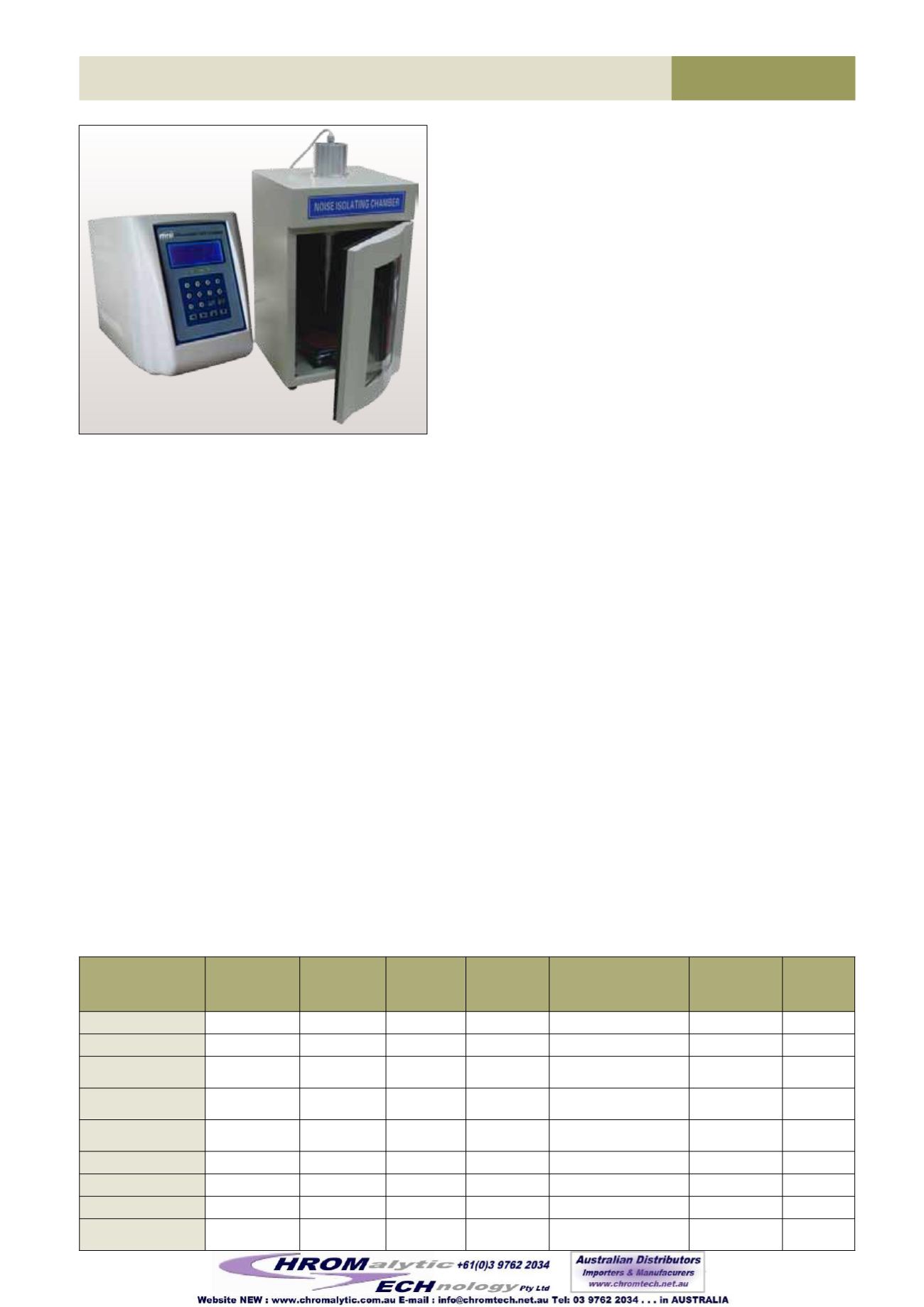
647
U
Digital
ULTRASONIC PROCESSORS
SONIC Series
Model
Ultrasonic
frequency
Maximum
power
Duty ratio
(%)
Optional
Probes
diameter
Standard probe
size included with
machine
Capacity
(ml)
Temp.
control
SONIC-150W
20-25 Khz
150W 1-99%
3mm
6mm
10-100ml
No
SONIC-250W
20-25 Khz
250W 1-99%
3mm
6mm
10-200ml
No
SONIC-650W
20-25 Khz
650W 1-99% 2,3,8,10,12,
15mm
6mm
0.5-500ml
No
SONIC-650WT
20-25 Khz
650W 1-99% 2,3,8,10,12,
15mm
6mm
0.5-600ml
Yes
SONIC-950WT
20-25 Khz
950W 0.1-99.9% 2,3,8,10,12,
15, 18mm
6mm
0.5-600ml
Yes
SONIC-1200W
19.5-20.5Khz
1200W 1-99% 15,25ml
20mm
50-1000ml
No
SONIC-1200WT
19.5-20.5Khz
1200W 0.1-99.9% 15,25ml
20mm
50-1000ml
Yes
SONIC-1800W
19.5-20.5Khz
1800W 0.1-99.9% 25,28ml
25mm
50-1200ml
Yes
SONIC-2000WT
19.5-20.5Khz
2000W 0.1-99.9% 6,10,12,15,
20,25,28ml
25mm
50-1800ml
Yes
SONIC Series, Ultrasonic Cell
Disrupter Homogenizer:
It is also called Ultrasonic homogenizer, processor or
disrupter. A Sonicator system is comprised of 3 major
components: Generator, Converter and Horn (also known
as a probe). The new model of the SONIC features:
Series is integrated with Temperature Monitor optional.
LCD display screen clearly displays all operating
parameters and options:
Temperature,time,output power etc.
Temperature monitor to protect sample from overheating.
Features:
Full amplitude control:
Amplitude (intensity) can be set
from 1-100% giving a greater degree of resolution and the
ability to pinpoint the amplitude needed to effectively
process your sample.
Applications:
Biological / Biotech:
Sonication is an ideal tool for lysing bacteria, yeast and tissue cells for the extraction of protein,
DNA, RNA, and cellular components. DNA shearing (ChIP Assay) is a very common application.
Pharmaceutical:
Cell disruption is common in analytical, quality control, and R & D labs to perform numerous
functions from mixing and degassing of analytical samples, to cracking open tablets for dissolution tests. Liposomes
and emulsions are easily formed by Sonication for microencapsulation purposes in the production of creams and
lotions.
Chemical:
Sonication accelerates both physical and chemical reactions,.Major advances in sonochemistry include chemical
synthesis of catalysts and new alloys, catalyzing organometallic reactions, micro-encapsulation of protein and
hydrolyzing esters. The use of sonication provides greater yields, increases overall efficiency, and saves energy.
Industrial:
Industrial uses include forming emulsions, catalyzing reactions, extracting compounds, and reducing particle size.
Continuous.
Environmental:
Sonication is used by environmental testing labs to process soil and sediment samples. Sonication takes just 8-10
minutes per sample versus 4-18 hours by soxhlet extraction, it uses half the solvent and improves yields.
Programmability:
Parameters including processing time, pulse on/off and power output ,it can be saved to memory
and run by the touch of a button. This new system can store more than 50 custom programs.
Pulse mode:
Adjustable pulse On and Off times to reduce the heat gain in temperature sensitive samples.
Auto tuning:
The Sonicator digitally tracks frequency changes in the converter/ tip assembly caused by load and
temperature changes and maintain electrical efficiency at all times. Manual tuning is unnecessary.
Temperature monitoring:
An optional temperature probe is available for those customers who wish to monitor the
temperature of their sample. If the temperature limits reached, sonication shuts down to prevent overheating.


